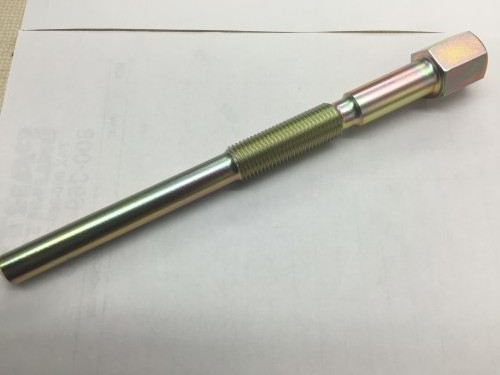i asked the rotax guys about the new pdrive clutch. I thought you could only Change the engage rpm of the clutch by changing the Primary spring?! The said yes, but on the new clutch, as you can see it in the Video, you Change the whole Position of the ramps out and in and additionally the inclination.
So the wole rpm range moves up and down. If you cange the top rpm up or down, you also Change the engange rpm the same up and down......
Thats what the rotax guys told me......
here is the Video. look at time 3:18 and you can see the movement of the clicker.
https://www.youtube.com/watch?v=c1LoVKaC8Ds
We won't really know until we begin fussing around with this clutch. I can see why you'd think the whole rpm range moves but with the shape of the ramps they could minimalize how much the engagement rpm changes
it's not my thinking about the function. i asked the rotax engineers about the function of the new clutch, because i was really impressed of the new design.
But one of them told me, he is also a former snowcross racer here in Austria, that he is not satisfied with the new clickers because of the Change of the whole rpm range especially the Change of the Engagement......
this is only Information directly out of the rotax facility.......
He is right. Watch the video closely you can see it change the position of the ramp where the ramp pivots.
It won't change the weight but will change the distance the weight of the ramp is away from the clutch. This will change the centripetal forces within the clutch. Therefore, changing engagement. Also it changes the ramp angle so yes, it will change top engine RPM as well.
My question is if 300 engagement equals 300 top engine RPM?
The clickers on all skidoo's have always changed ramp position on every TRA clutch ever built .... There are 2 ways to change engagement either by changing primary spring or ramp profile or both .... Clicker position does not effect engagement.
DPG
Looking at this clutch... and trying to wrap my head around it.
This is a discussion... a work in progress if you will to discuss and adapt our understanding of this new clutch.... so please bear with me and participate in the discussion.
The ramp...which now looks convex rather than concave.
So the tilt of the flywieght changes.
If the roller of the arm is in contact with the flyweight at rest... and holds clutch open to that point... and the arm cannot move at all... then, yes you would also change the engagement speed...
But... if the arm/roller can 'flop' a bit, like on a TRA, before it contacts the ramp...then it will not affect the engagement speed.
Edit:See post #16 below... I now believe that Xeiscountyduke's info from his Rotax contact IS, in fact, correct... and that engagement RPM will also be affected.
So my questions are...
Why is the flyweight convex now? (or do I need to change my brand of crack??)
Does the arm/roller have any free movement before it hits the ramp?
.

Last edited:




 This would only affect the engagement speed of the clutch IF... IF... the flyweight were in contact with the roller with engine at rest.
This would only affect the engagement speed of the clutch IF... IF... the flyweight were in contact with the roller with engine at rest. 



